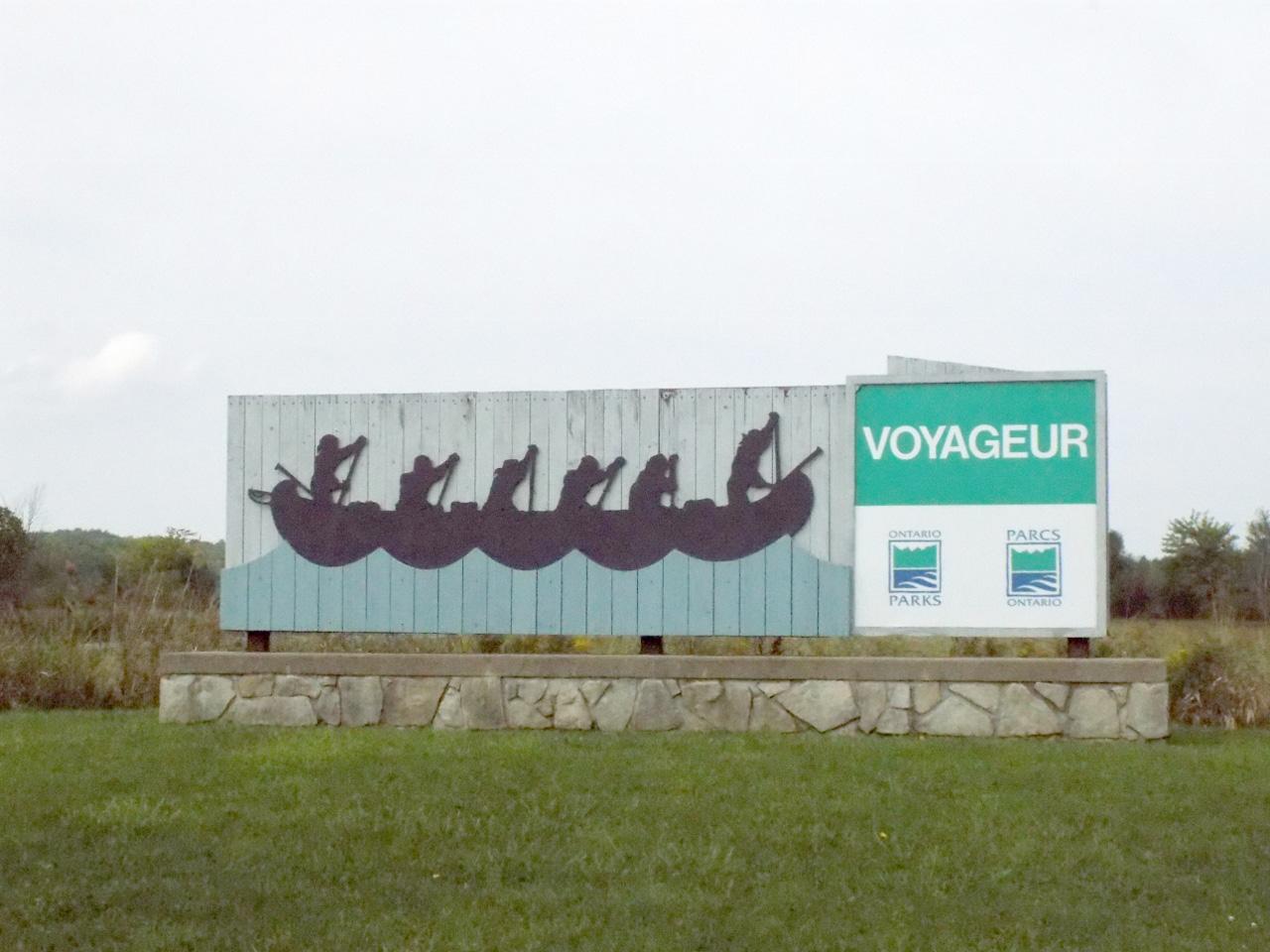Ontario’s provincial park system is celebrating its 125th anniversary this year. It all began with Algonquin Provincial park, but there are many local provincial parks – each with their own natural significance and history.
The biggest—and most commonly known of these parks is nearby Voyageur Provincial Park, which covers over 3,600 acres/1,400 hectares of land and water between Chute-à-Blondeau and Pointe-Fortune. The park was created under an Ontario government regulation in 1966 and it officially opened to visitors in 1971, but its history goes back much further. In 1943, the Ontario and Quebec governments reached an agreement on how to divide up the remaining sites for hydroelectric dams on their shared boundary along the Ottawa River. Hydro-Québec built the Carillon dam between 1959 and 1964, raising the water level by 62 feet/19 metres at Carillon and 9 feet/2.7 metres at Grenville. The Long Sault Rapids disappeared and the 10 square mile/26 square kilometre Lac Dollard des Ormeaux was formed.
Hydro-Québec expropriated land on both sides of the Ottawa River for the dam. Farms and homes were vacated, and Québec paid Ontario more than $2.2 million dollars for the expropriated property. Originally named Carillon Provincial Park, the name was changed to Voyageur Provincial Park in 1994 because of confusion with the name of the Carillon municipal park and the Carillon National Historic Site located on the other side of the Ottawa River. Voyageurs were the men who paddled big canoes up and down the Ottawa River during the early days of French exploration, colonial settlement, and the fur trade. Voyageur Provincial Park is popular with travellers who want a place to camp for the night on their eastbound or westbound trips along Highway 417 or Autoroute 40, which are part of the Trans-Canada Highway. The park is located about halfway between Montréal and Ottawa, which makes it a very popular destination for people from both cities.
The historical voyageur connection is also commemorated with a National Historic Site plaque by the park office building recognizing the Fight at the Long-Sault, also called the Battle of Long Sault. On May 2, 1660 by the Long Sault Rapids, French military officer Adam Dollard des Ormeaux, with 16 Frenchmen and 40 Indigenous Huron people, waylaid 200 Onondaga (Iroquois) hunters who were their enemies. 500 Mohawks and Oneida aided the Onondaga in the one-week fight which completely wiped out Dollard des Ormeaux’s party and only 19 Iroquois were killed. That spring, the Iroquois did not harass the French settlements on the St. Lawrence and for the first time in several years, the French were able to ship their furs from places in the north and west to Montreal. Dollard des Ormeaux was regarded as the saviour of New France. He died at Carillon on May 21, 1660.
Voyageur Provincial Park has 416 campsites, there are three beach areas, a large day use picnic area, and a place to rent canoes and boats. There is also a short walking trail. In the winter, Voyageur has 10 kilometres/6 miles of trails for cross-country skiing. The Park Superintendent is Jason Bernique and the Assistant Park Superintendent is Sabrina MacDowell, who said the many wetlands and bays have made the park a major staging area for migratory birds. As much of the land was used for farming before the flooding and establishment of the park, old stone fences and hedgerows can be seen, along with apple trees that have since gone wild and provide a source of food for animals.
Provincial parks are supposed to preserve the natural environment, but invasive species have been a challenge over the years at Voyageur. The bays and inlets were infested with water chestnut a decade ago. It was choking out fish and wildlife habitat and making the water undesirable for recreation. The park began an aggressive, yearly program to remove the plant from the water in 2010. MacDowell, who oversees the project, said, “It’s improving every year” and the problem has been reduced considerably. A current, invasive wildlife concern at Voyageur are wild boar. Wild boar are native to Europe and have been imported to North America and held in captivity. They escape and disrupt life and habitat for other wildlife. Wild boar have been sighted in the park and Superintendent Jason Bernique is attempting to address the problem.
Changes over the years have included adding a park store by the day-use beach, a new entrance building, and discontinuing horseback riding as one of the activities offered. MacDowell said the park is upgrading its infrastructure and is looking at making improvements to trails in future years, so visitors can better enjoy the nature the park offers. Voyageur is what is known as an Operating Park because it offers recreational services to the public. There are also two Non-operating Parks that are administered by Voyageur. One of them is the Alfred Bog. The Ontario government announced in April that the 10,000-acre, 40.5 square-kilometre domed peat bog will be formally added to the provincial parks system. Sabrina MacDowell said the government is developing a management plan for the park and will be consulting with local communities during the process. Voyageur also oversees Dupont Provincial Park, a 1,517 acre/614-hectare nature reserve near Morrisburg.
There’s also an ironic twist to the provincial park history in this region. Jessup’s Falls Conservation Area near Plantagenet was once a provincial park. It was called South Nation Provincial Park and once offered a small number of campsites. According to John Mesman of the South Nation Conservation Authority, provincial parks policies were changing in the 1980s and the province wanted to divest itself of some smaller parks but ensure they were still being put to recreational uses. The conservation authority purchased the park for $250 in 1986 and changed the name. Camping was discontinued but the small park remains a popular place to access the South Nation and Ottawa Rivers for fishing and boating.


